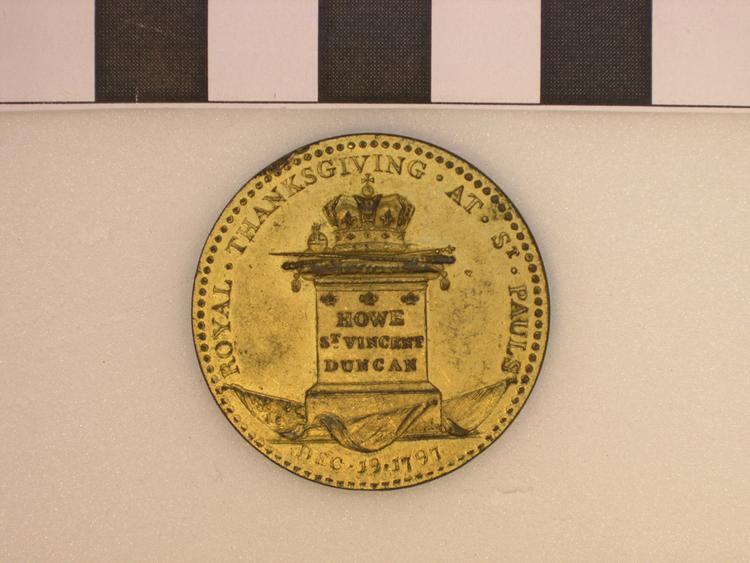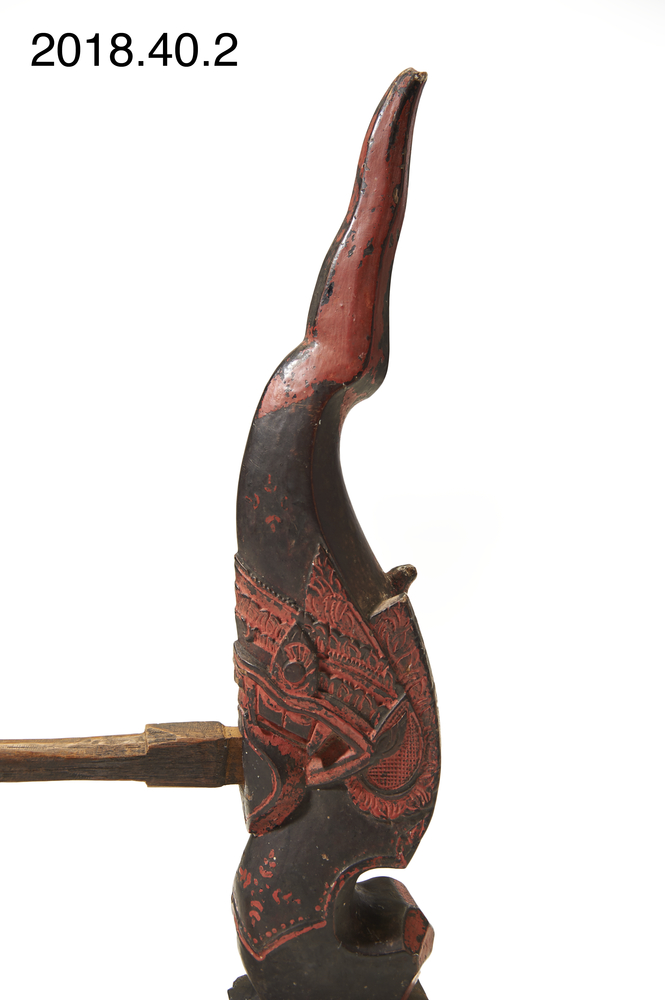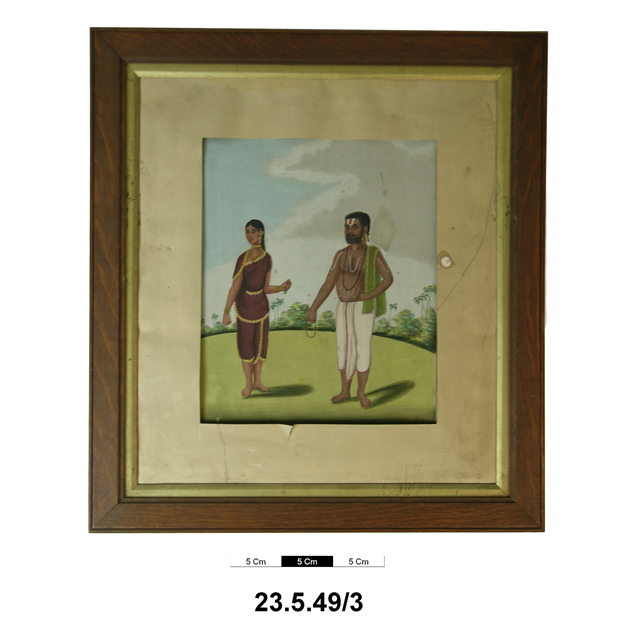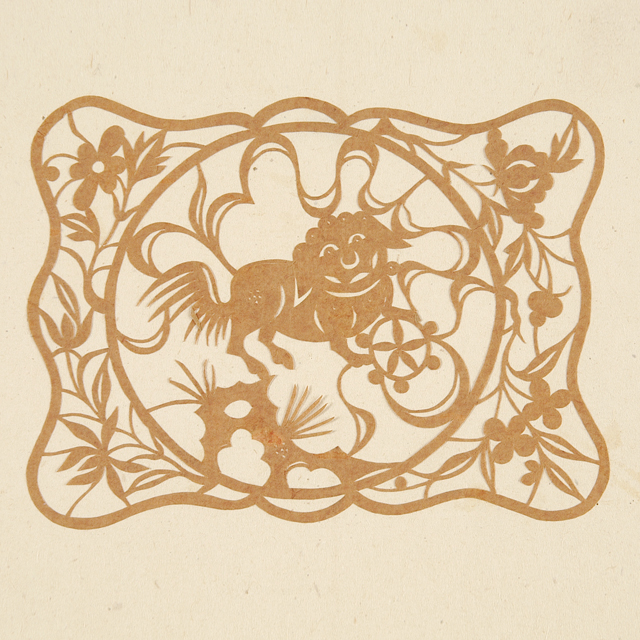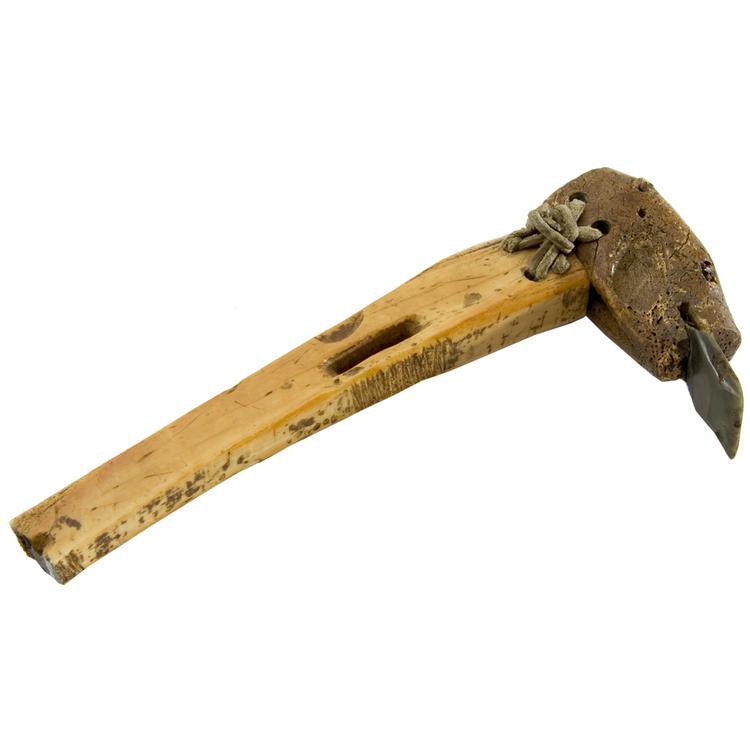
Bone handle and stone blade. For leatherworking.
Used to prepare animal skins for making clothing, blankets, kayaks, or tents How is it used? It was used to clean animal skins by scraping the fat and unwanted tissue away from the inside before the hide was stretched and washed. Who is it used by and why them? It was used by Inuit people leading a traditional hunting life in the arctic circle area. Because of their isolation they needed to make all their tools themselves from natural materials. This scraper was used by women and girls as preparing animal skins was a job only for women. Girls were taught leatherwork skills by their mothers from a young age Inuit is used as a name for indigenous peoples who live within the arctic circle and were previously called Eskimos. The term Eskimo was not chosen by the Inuit themselves most of whom now prefer to be known as Inuit, but there is still no total agreement on their name. Inuits live in Canada, Alaska and Greenland and so have different nationalities. Although they are share a common culture few of them now live a completely traditional lifestyle. In the past they were living in very isolated places and so they had to be totally self sufficient, relying on land and sea animals, driftwood and soapstone to provide all their needs. Their technology was simple and, before the introduction of metal through trade with Europeans, used only natural materials. Scrapers like this were used in leatherwork to prepare animal skins ready to be made into such essential items as tents, kayaks, blankets, clothes, bags, boots etc. Both men and women wore Parka (anorak) jackets made from animal skin but the woman’s jacket called ‘Amouti’ was longer, with flaps at the front and back. As women spent much of their time sitting to prepare food and make clothing the long back flap was used as a sort of cushion. The woman’s jacket also differed from the man’s because it had a larger hood to protect the baby, carried on her back, against the cold wind. Men, who spent most of their time hunting had shorter jackets for easier movement and the hoods were tighter fitting so as not to block their field of view. Boots, called Kamik, were made from dressed skin which means that all the fur had been scraped off. At the coldest time of year Inuits wore two layers of clothing. The inside layer was worn with the fur against their skin and the outer layer with the fur on the outside, this also included their boots and mittens.
Inuit is used as a name for indigenous peoples who live within the Arctic circle and were previously called Eskimos. The term Eskimo was not chosen by the Inuit themselves most of whom now prefer to be known as Inuit, but there is still no total agreement on their name. Inuits live in Canada, Alaska and Greenland and so have different nationalities. Although they share a common culture few of them now live a completely traditional lifestyle.
In the past they were living in very isolated places and so they had to be totally self sufficient, relying on land and sea animals, driftwood and soapstone to provide all their needs.
Their technology was simple and, before the introduction of metal through trade with Europeans, they used only natural materials.
Scrapers like this were used in leatherwork to prepare animal skins ready to be made into such essential items as tents, kayaks, blankets, clothes, bags, boots etc.



